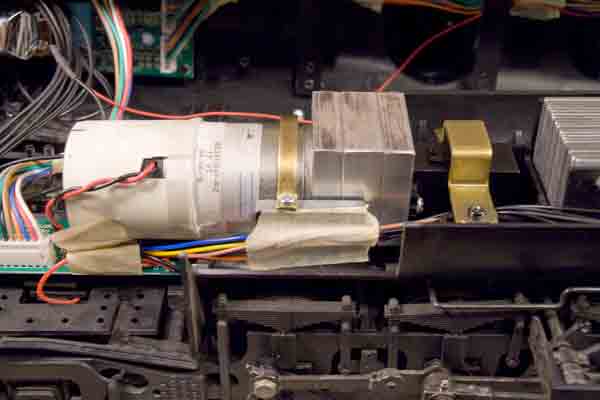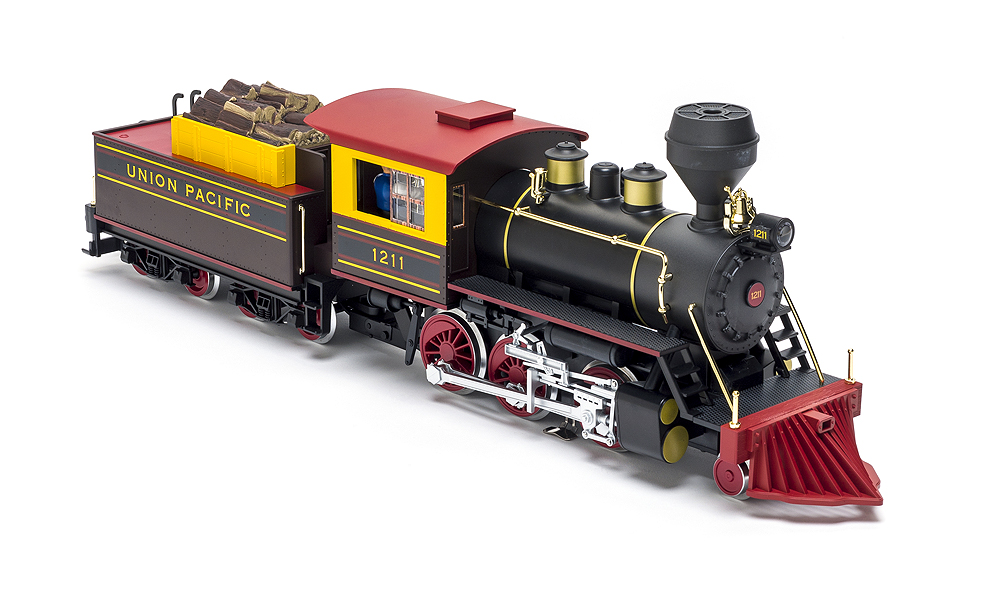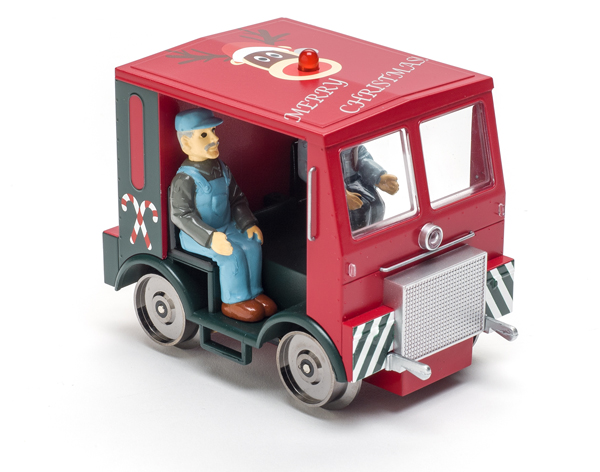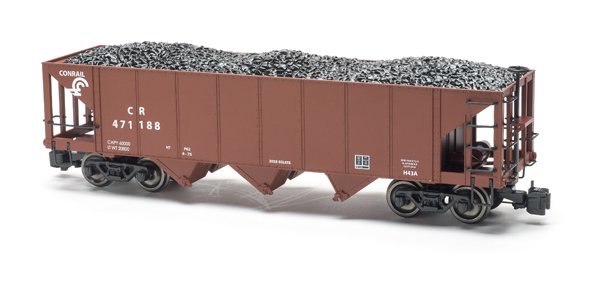Re-gear kit for Bachmann K-27
R and K Railroad Products
16722 Dakota Dr.
Leavenworth KS 66048
Price: $140
Website: www.randkrailroadproducts.com
Add-on gearbox for Bachmann K-27; requires disassembly and reassembly of engine; motor must be sent in to be fitted with new gearbox
Pros: Robust construction; smooth operation allows for very controlled speeds on a variety of grades; excellent slow-speed performance
Cons: Reduction gearhead somewhat noisy at higher speeds, though it may be masked by sound system
However, I’m always curious about anything that’s intended to improve performance, and the K-27 is such a good-looking locomotive that it deserves to have top-drawer performance.
R and K Railroad Products’ drive really isn’t an entirely new drive, but just a reduction gearhead that’s attached to the stock motor, then screwed back into the Bachmann-supplied gear tower. Its gear ratio is just under 2:1, resulting in a final gear ratio of approximately 26:1—not quite twice that of the stock drive. The idea is that the higher gear ratio will make the locomotive run slower and be less susceptible to changes in grade, thus keeping the speed more constant.
R and K does not sell the reduction gearhead by itself. You must send them your motor and to be fitted with the gearhead. They remove the original worm, fit the gearhead to the motor, then replace the worm on the shaft coming out of the gearhead. The gearhead has two holes that accept the original mounting screws, so it’s nearly a “drop-in” replacement. You can also buy the motor/gearhead combination for an additional $50, allowing you to keep your stock motor, should you want to change back for whatever reason.
To remove the motor, you need to get the boiler off of the locomotive. This is fairly simple, requiring only the removal of the front boiler stays and four screws. (See the paperwork that came with your K-27 or go to Bachmann’s website for PDF files of the diagrams.) Then remove the motor by taking off the two retaining straps that hold things in place, then carefully remove the screws that hold the motor in place. Cut or unsolder the motor leads from the PC board, and the motor’s ready to be shipped.
Upon its return, the motor will have an aluminum block attached to the front, which holds the reduction gears. You can spin the worm gear and see the flywheel on the motor turn about twice as fast as you’re turning the gear. You’ll also hear a little bit of gear noise, which I’ll get to later. Installing the motor is as easy as was removing it. First, resolder the motor leads to the PC board, then attach the motor to the stock gear tower.
Bachmann installed a cooling fan over the motor that hits the new aluminum block. You can remove the fan entirely or shorten the posts on which it’s mounted. I opted to remove it, as it does not appear to be necessary. Raising it would simply mean cutting about 14″ off of the posts, finding slightly shorter screws, and reattaching it. Now, you can replace the boiler.
With everything assembled, I set the engine on the track, bumped the throttle up a notch, and watched as it started creeping at a lower throttle setting than it had previously—something I wasn’t expecting, given that the motor should be turning faster (higher voltage) for the same track speed. But with the higher gear ratio comes less resistance to turning the wheels, hence very slow speed control. As I slowly increased the throttle, the locomotive gradually picked up speed until it was moving at a fair clip. Up and down the grades, I didn’t have to adjust the throttle at all; it just kept a more-or-less constant speed. I measured the top speed (at 14V) at around 20 scale miles per hour.
There is a trade-off. I mentioned the gear noise when you just spun the worm. This is present when the locomotive is running at speed (around 10 scale mph or above). It’s just the nature of the beast. I’m told by others who have installed these gear boxes that it gets quieter over time and I think mine’s getting quieter as I run it. If I wasn’t running a sound system with this locomotive, I think the noise would be more noticeable but the sound system does a good job of masking it, even at the low-to-moderate volume levels at which I run my sound. It sort of blends into the whine of the generator. From more than 15 feet away, I have to really listen—and know what I’m listening for—to hear it.
I wasn’t sure I’d notice any appreciable difference in performance (at least on my railroad) but I was pleasantly surprised. The locomotive is very controllable and a pleasure to operate. While I certainly hope the gearbox continues to get quieter over time, I’ve heard louder gears on other locos. With the sound system masking it, I easily forget it’s there. I thought the stock motor was impressive at slow speeds, but this is even better.














